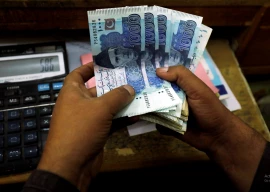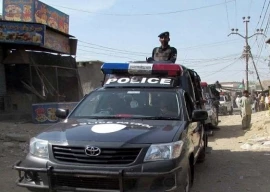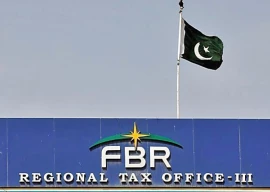
In the nine districts that fall within the jurisdiction of the Hyderabad range police, the ratio of police officials to civilians has climbed up to 1:660. The figure is even lower than that prescribed by the antiquated Police Rules of 1934 that is implemented to this day.
The Hyderabad police range covers nine districts of Hyderabad and Bhambore divisions, including Hyderabad, Dadu, Jamshoro, TM Khan, Tando Allahyar, Matiari, Thatta, Sujawal and Badin. The combined population of these districts is around 12 million. The total policing force in this range is around 18,500.

Even worse is the fact that hardly 77 per cent of this force is engaged in operational duties as around 11 per cent are calculated to be either on leave or training and another 12 per cent are deputed for escorts, standing guards and gunmen. This leaves the department with only about 14,500 policemen on active duty.
The population to police disproportion is even higher in Matiari, Badin, Tando Allahyar and Hyderabad where there is one police official for 883, 846, 807 and 778 people, respectively.
“It has become extremely difficult to manage the affairs with this insufficient force,” said the Hyderabad DIG, Dr Sanaullah Abbassi. In two separate letters, written on August 29 to the Sindh police IG, Abbassi recommended ambitious and unprecedented appointments and modification of 1934 rules concerning the correlation between population and police.
Appointments
The changes in the 1934 rules are subject to legislation by the provincial assembly and may take a long time to materialise. The DIG, however, wants the home department to create new vacancies in the force without delay.
He has submitted a requisition for the appointment of 15,214 new policemen in his range. The proposed recruits will comprise 14,199 constables, 964 head constables, 24 assistant sub inspectors (ASIs) and 27 sub inspectors (SIs).
These jobs will be in addition to the 20,000 new vacancies in the police which the Sindh government has announced to create in the province during the fiscal year, 2014-15.
“The new jobs will definitely put a burden of billions of rupees on the police budget. But, to improve policing, it is vital to meet this shortfall.” A newly appointed constable is paid a salary of Rs17,000 per month. The appointment of 14,199 constables will require an additional amount of Rs2.89 billion in the annual budget. A sum of between Rs13 to Rs17 million in salaries will have to be earmarked for the SIs, ASIs and HCs.
Despite this formidable financial burden, the DIG believes the appointments are too important to be shelved for some time in the future. To ensure transparency in the selection process, Abbasi said that it will be better if the responsibility was given to the district and session judges of the respective districts. The Sindh High Court’s monitoring team, comprising SHC judges, can also supervise the process.
Legislation
The DIG’s proposition for the revision of the police-population ratio suggests one personnel for either 300 or 350 people. The letter to the Sindh IGP cites ten countries, from the developed and developing world, to make his case for balancing the proportion.
“There have been changes in the laws dealing with the police force. But, as far as this particular correlation is concerned, the colonial-era formula still continues,” he said, emphasising the need for immediate reforms.
His letter urged the provincial police chief to forward his recommendations to the government for amendments in the police rules.
Published in The Express Tribune, September 8th, 2014.















COMMENTS
Comments are moderated and generally will be posted if they are on-topic and not abusive.
For more information, please see our Comments FAQ